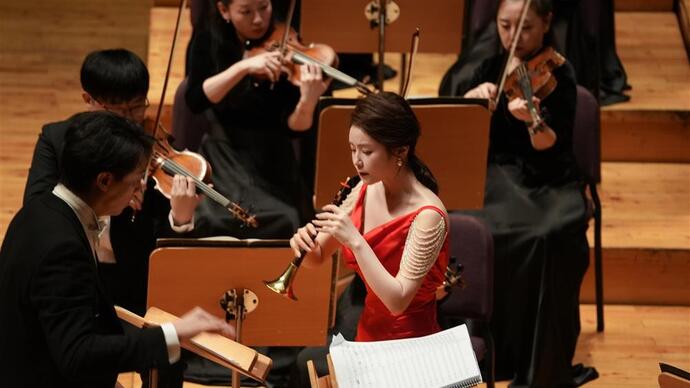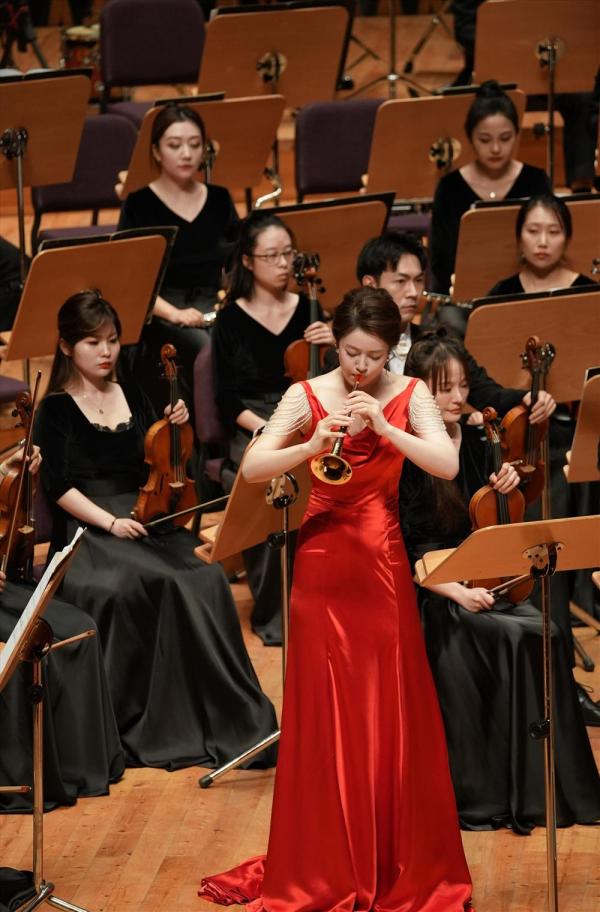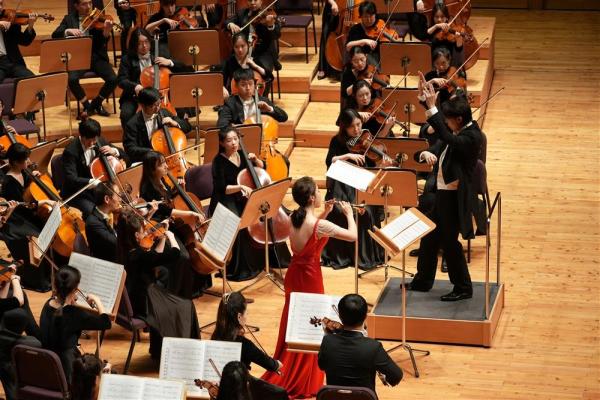Liu Wenwen, a "post-90s" suona performer, performed "A Branch of Flower" for the first time
On the evening of October 16, the "post-90s" suona player Liu Wenwen joined hands with conductor Zhang Liang and the Shanghai Philharmonic Orchestra to perform the world's first suona concerto "A Branch of Flowers" created by composer Shen Yexin at the Shanghai Symphony Concert Hall. At the concert, the Shanghai Philharmonic Orchestra also played Richard Strauss's "Trick of Tyre" and Edward Elga's "Variations on Riddle".

Liu Wenwen was born in the Suona family. She is the first Suona doctor in China and a young teacher of Shanghai Conservatory of Music. She was on the same stage with the Melbourne Symphony Orchestra, the Malinsky Symphony Orchestra and other world-renowned orchestras. "A Branch of Flower" was originally a traditional classic of suona, which was compiled by suona artist Ren Tongxiang in 1959 according to Shandong local opera and other folk tones. The work fully demonstrates the rich playing skills of suona, and has a strong folk art style. Liu Wenwen hopes to reintroduce such a highly representative suona work with contemporary composition techniques and musical expression, take root in tradition and keep integrity and innovation.

To this end, she specially commissioned the composer Shen Ye to create this work for her. Shen Ye is the first Chinese composer signed by the German Great Bear Publishing House, the oldest music publishing house in the world. He integrates Chinese culture into his music language. He created violin concerto Silent Poems, symphonic poem Memorial, Traveler's Dream, chamber music Autumn River Boat, Cold Pond Crane Shadow, chorus divertimento Expectation, Transcendence and other works. "A Branch of Flowers" is not only a famous suona song, but its cultural source can be traced back to the legend of the Tang Dynasty of Bai Xingjian and Yuan Sanqu of Guan Hanqing. " Shen Ye said, "The One Flower I want to create blends the sounds of the Central Plains and Western Regions, and sings about the fiery love and faith in the world."
In the process of creation, Shen Ye went to Xinjiang to collect wind. In the paintings of Thousand Buddhas Cave Wall where the ancient country of Qiuci is located, he was greatly shocked by flying to the sky and playing the suona more than 1600 years ago. The original intention of Shen Ye's works is to let a folk, remote, free and hot music breath pass through today's modern concert hall. The music is inspired by the Jin Dynasty murals buried in the yellow sand, the Tang legends and the Yuan Sanqu tunes, and it blows this breath of wilderness to the audience through the dialogue between the suona and the band.
The whole song only uses a high pitched suona to compete with the whole symphony orchestra, representing the interaction and connection between individual life and the world, and ultimately conveys the theme of limited life and unlimited creativity. In the process of creation, Shen Ye and Liu Wenwen discussed together and figured out many new sound effects, techniques and techniques. Some of these techniques are unprecedented challenges for suona players. The special treatment of the resonance between the band harmony and the suona, and the unique harmony produced by the timbre collision in the work all inject unique soul into the newly created "A Branch of Flower".

On the night of the performance, Liu Wenwen, who was dressed in a red dress, was amazed by her dazzling playing skills, intricate rhythm and sound effects. In this nearly 20 minute suona work, only one d high pitched suona is used in one go. The limited range and timbre express the music mood of great joy and great sorrow.
In the works, Chinese folk music and western classical music blend with each other, which is a great challenge to the control, expression and re creation ability of performers. Liu Wenwen believes that it should be an important task for Chinese composers, performers and orchestras to make Chinese music shine in the world music world. "One foot in the tradition, one foot in the modern. Only by consolidating the traditional root learning can we inherit and innovate."
 渝公网安备 50010702504639号
渝公网安备 50010702504639号